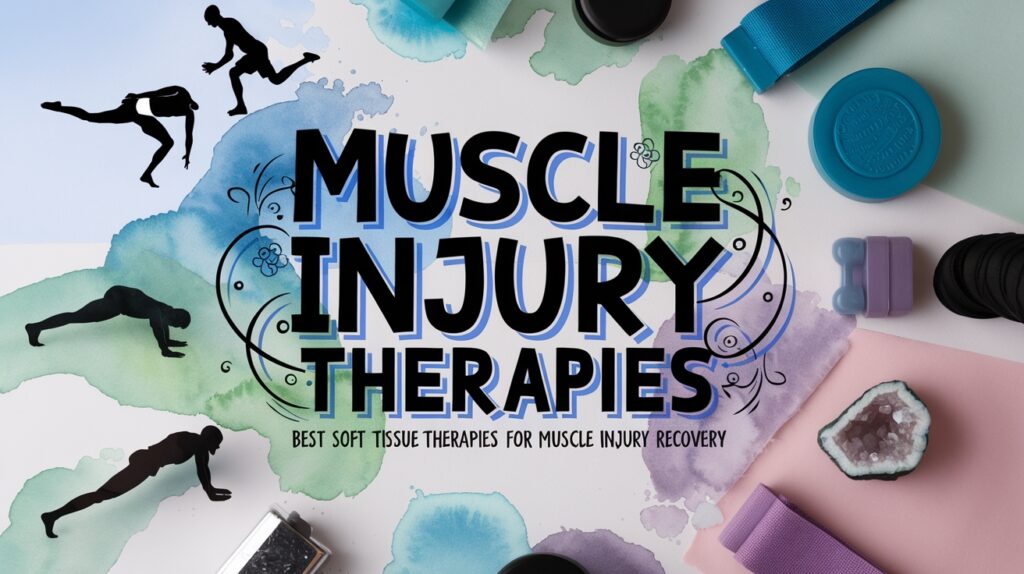Deep tissue massage, Active Release Technique (ART), and Instrument-Assisted Soft Tissue Mobilization (IASTM) represent the most effective therapies for muscle injury recovery. Deep tissue massage breaks down scar tissue through targeted pressure, while ART combines direct pressure with movement to address specific problem areas. IASTM utilizes specialized tools to enhance blood flow and promote healing. Understanding how these therapies work together can maximize your recovery potential and prevent future injuries.
Deep Tissue Massage: Breaking Down Scar Tissue and Adhesions
When deep tissue massage is properly applied to injured muscles, it can effectively break down problematic scar tissue and adhesions that often develop during the healing process. You’ll find that this targeted pressure technique works by manipulating the deeper layers of muscle and connective tissue, increasing blood flow to promote healing and reduce inflammation.
During your treatment, the therapist will use firm pressure and slow strokes to reach deeper muscle layers, focusing on areas where you’ve developed adhesions. While you might experience some discomfort during the session, it shouldn’t be painful. The technique helps realign muscle fibers and break up collections of scar tissue that can restrict movement and cause chronic pain. You’ll typically notice improved range of motion and decreased muscle tension after several sessions. Additionally, incorporating soft tissue therapy can enhance the effectiveness of your recovery by addressing underlying movement dysfunctions.
Active Release Technique (ART): Targeting Specific Problem Areas
Through precise manipulation and targeted pressure, Active Release Technique (ART) stands out as a specialized soft tissue therapy that addresses specific muscular injuries and chronic conditions. You’ll find that ART practitioners use their hands to evaluate the texture, tightness, and movement of muscles, fascia, tendons, and ligaments to identify problematic areas.
During treatment, you’ll maintain an active role as your practitioner applies direct pressure to affected tissues while you move the targeted body part through specific ranges of motion. This combination helps break up adhesions and restore proper tissue movement. The technique’s effectiveness stems from its ability to target individual muscle fibers and address issues like repetitive strain injuries, post-surgical scarring, and movement compensation patterns that can lead to chronic pain. Moreover, ART is particularly beneficial as it not only aids in recovery but also maximizes movement efficiency, which is crucial for preventing future injuries.
Instrument-Assisted Soft Tissue Mobilization (IASTM): Enhancing Blood Flow and Healing
Unlike traditional manual therapy techniques, Instrument-Assisted Soft Tissue Mobilization (IASTM) employs specially designed tools to detect and treat areas of soft tissue dysfunction. You’ll find these stainless steel or plastic instruments come in various shapes and sizes, allowing practitioners to effectively break down scar tissue and fascial restrictions.
During treatment, you’ll experience the tool gliding across your skin while the practitioner applies controlled pressure to identify adhesions and fibrotic tissue. This process stimulates your body’s natural inflammatory response, increasing blood flow and cellular activity in the targeted area. You’ll typically notice improved range of motion and decreased pain after several sessions, as IASTM helps release tension in muscles and connective tissues while promoting the production of collagen for proper tissue alignment. Additionally, sports massage can complement IASTM by further enhancing recovery and performance for athletes.


